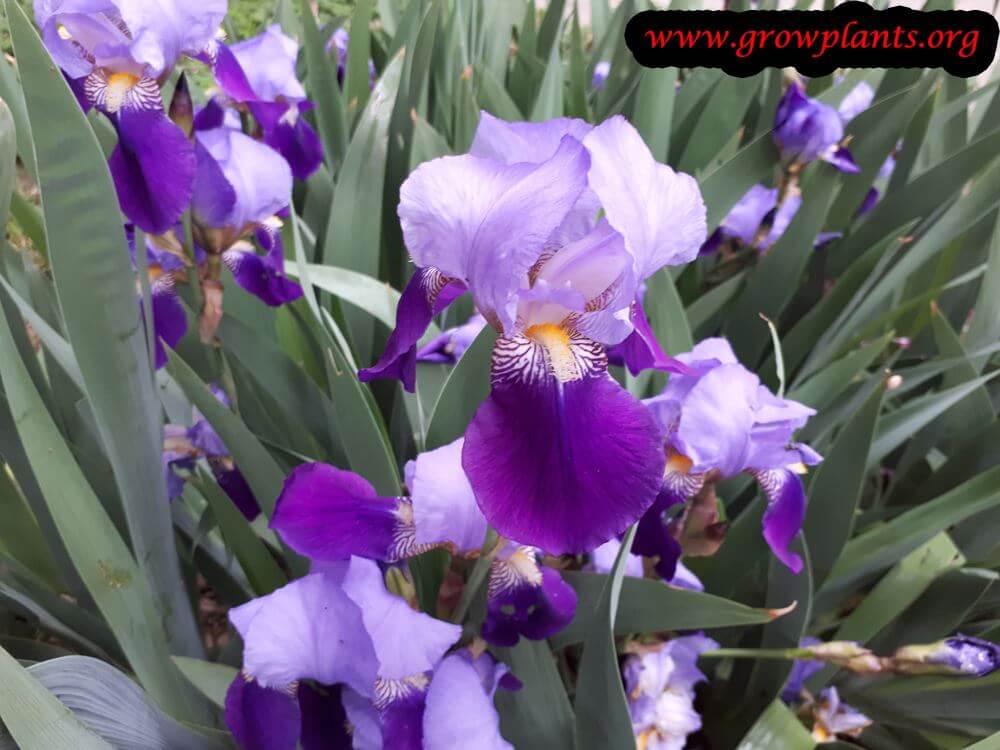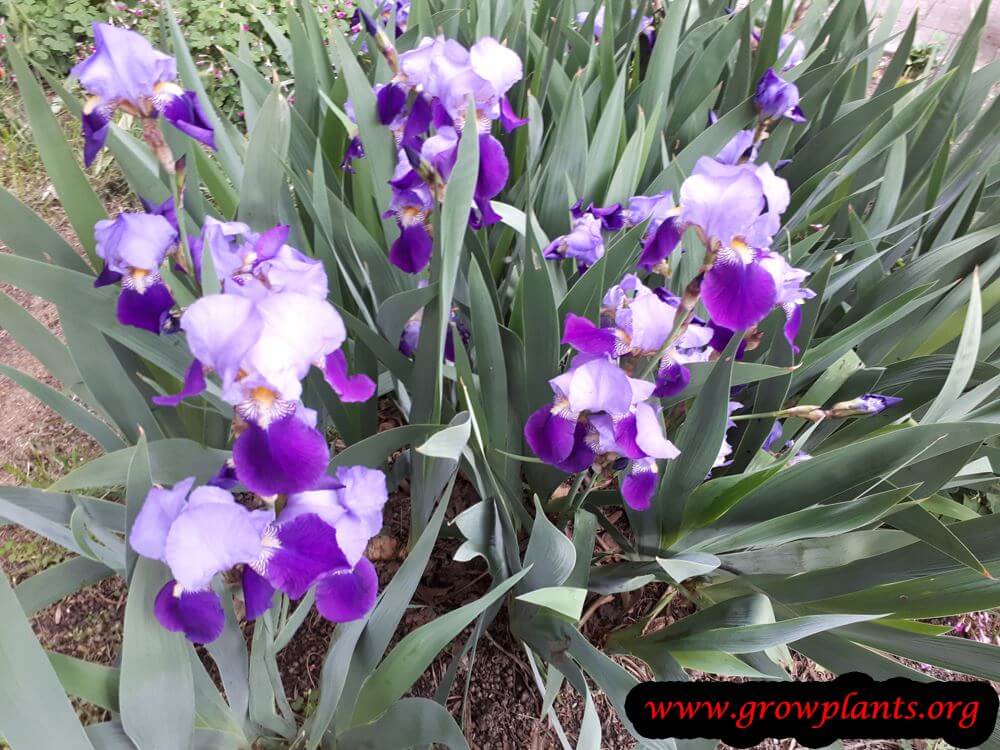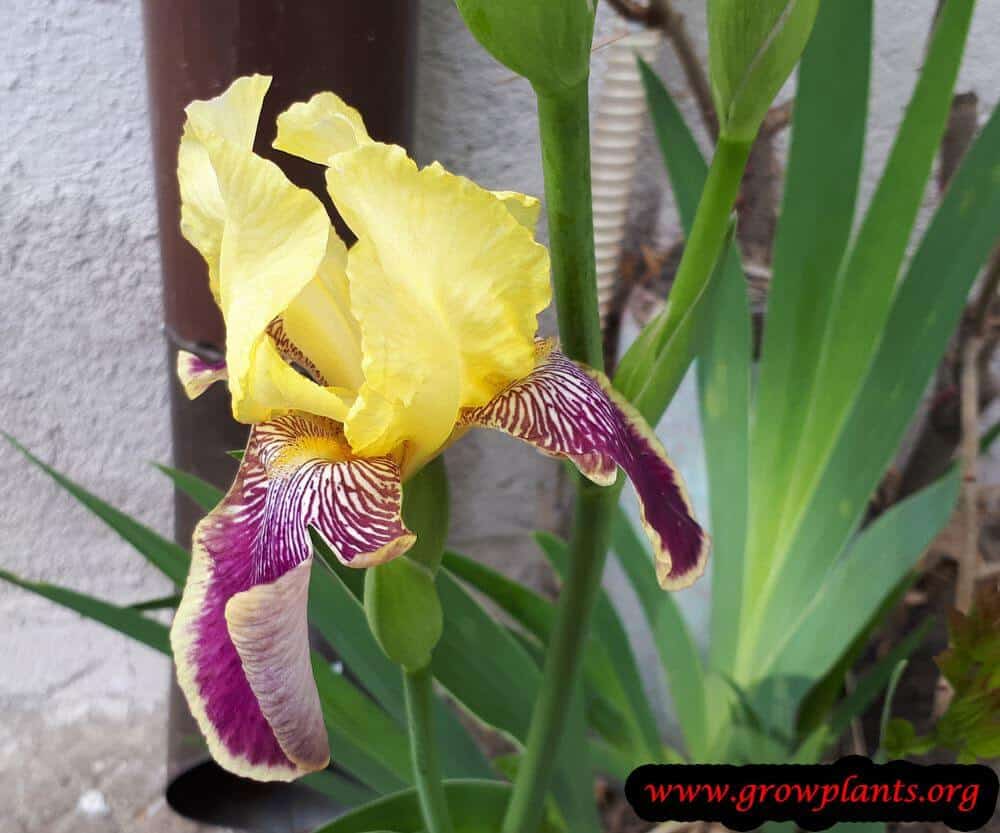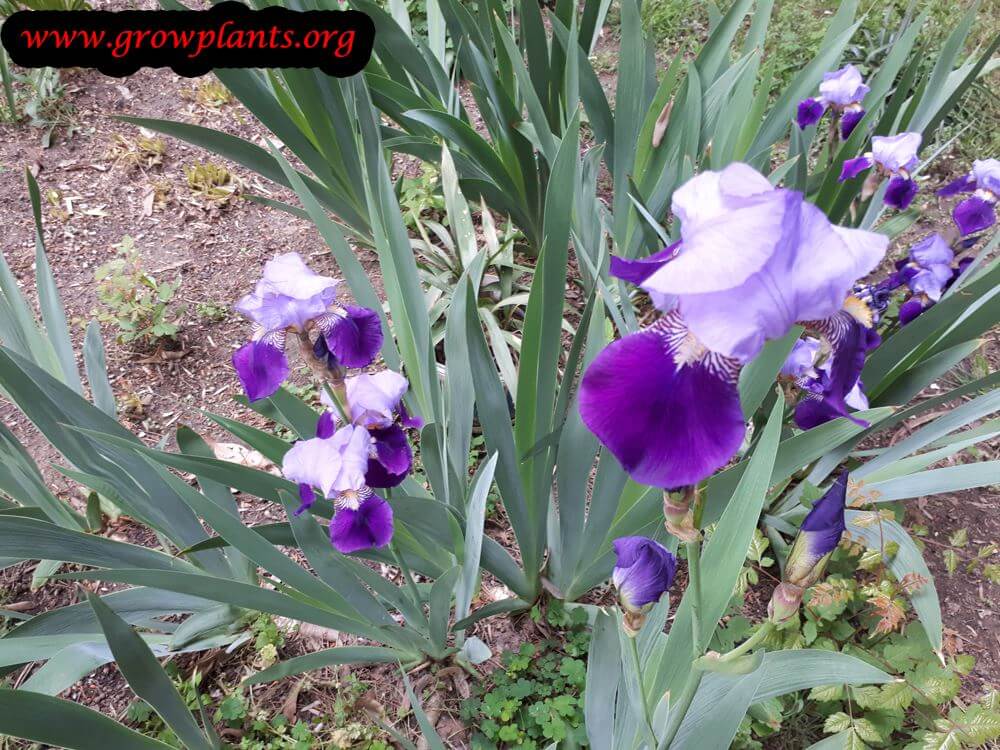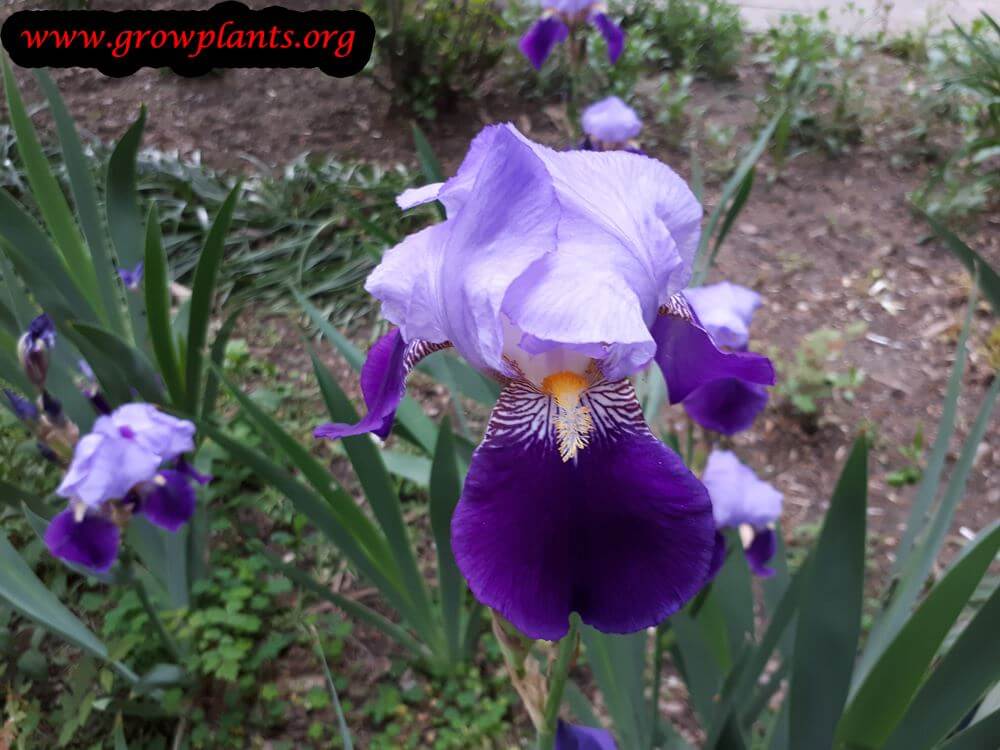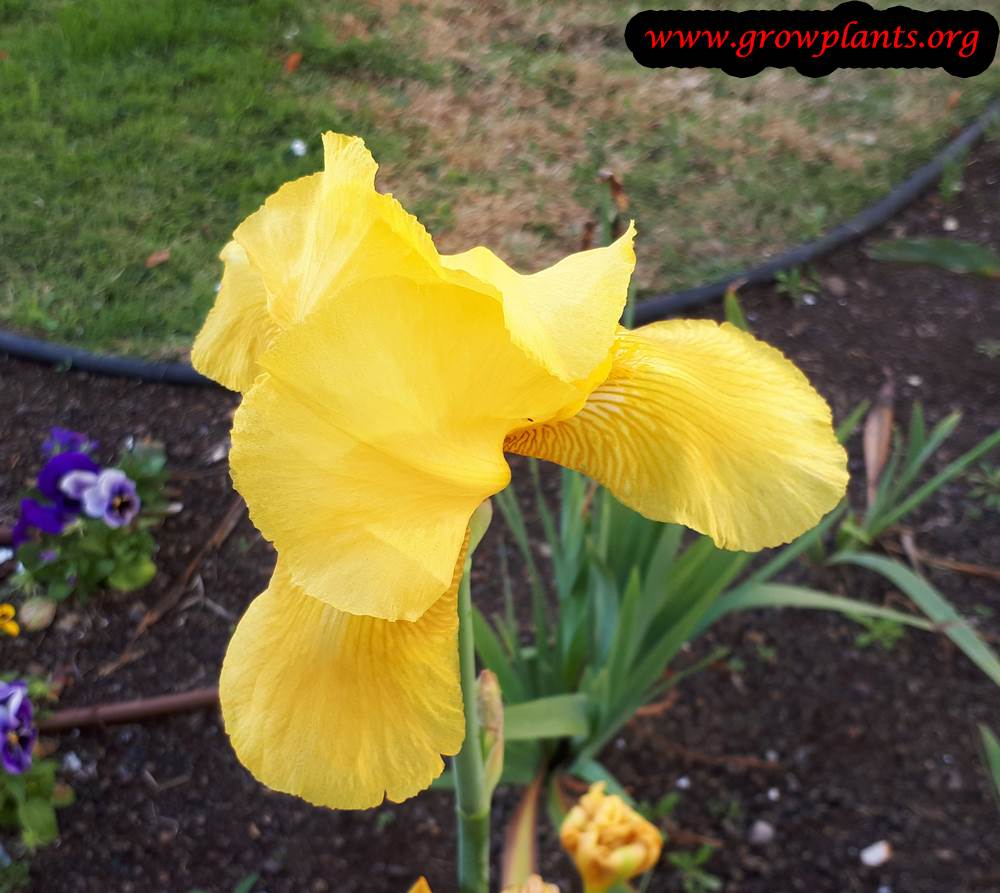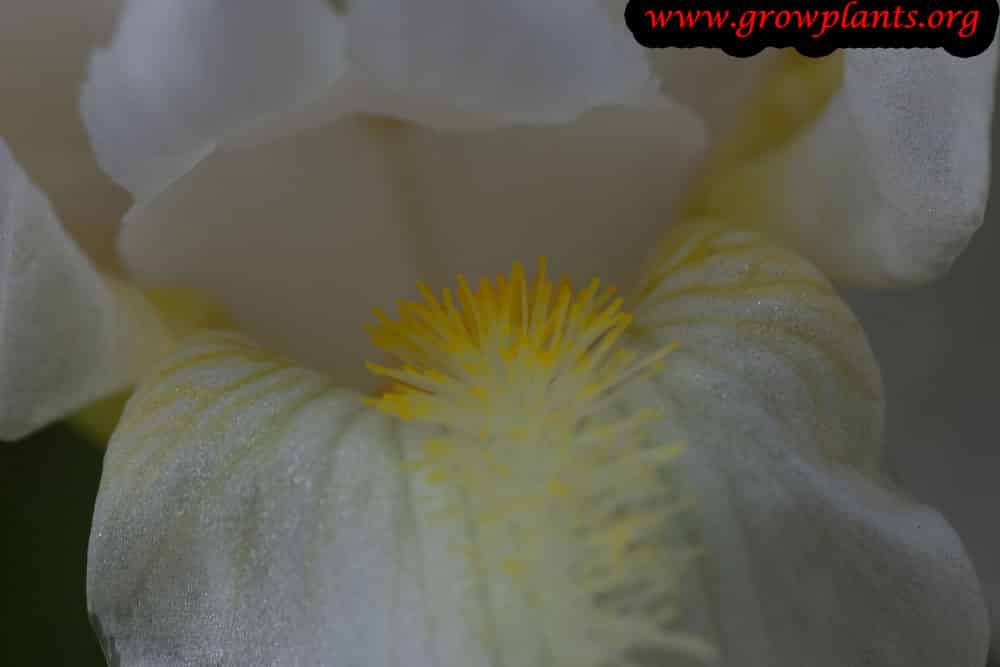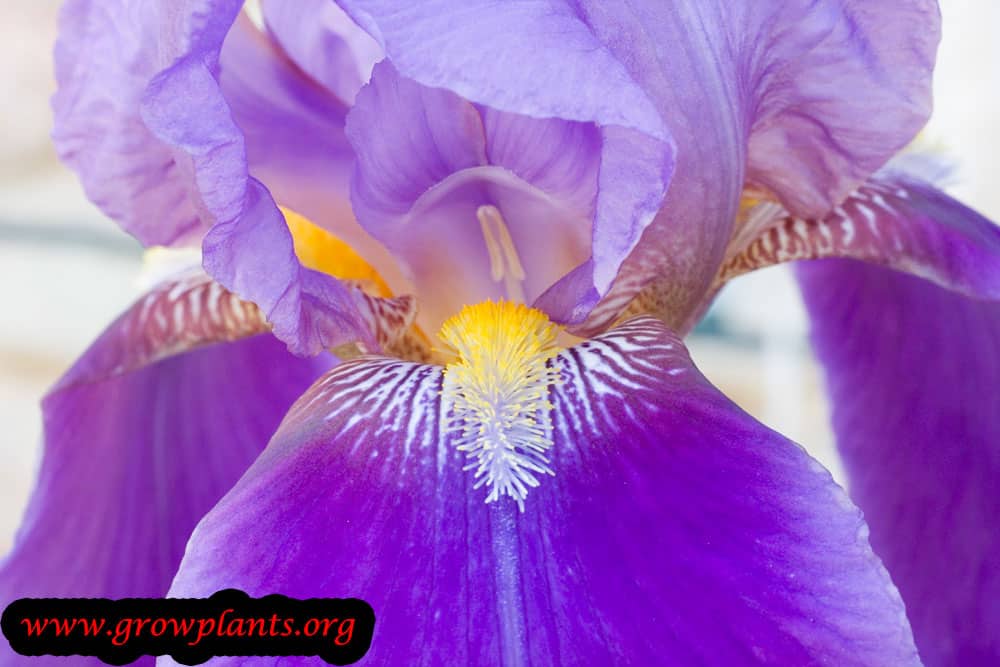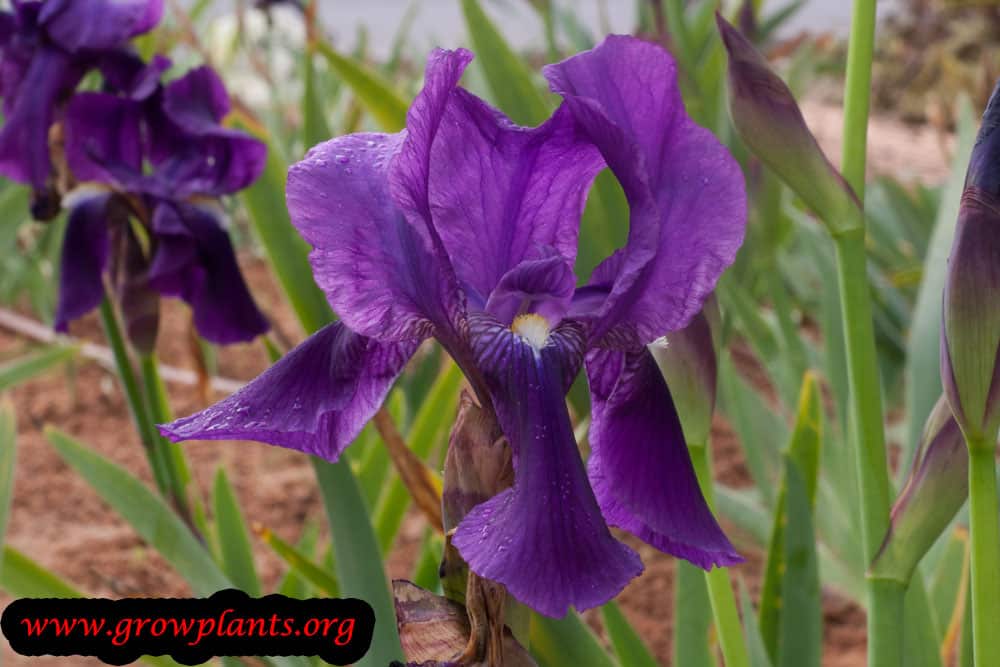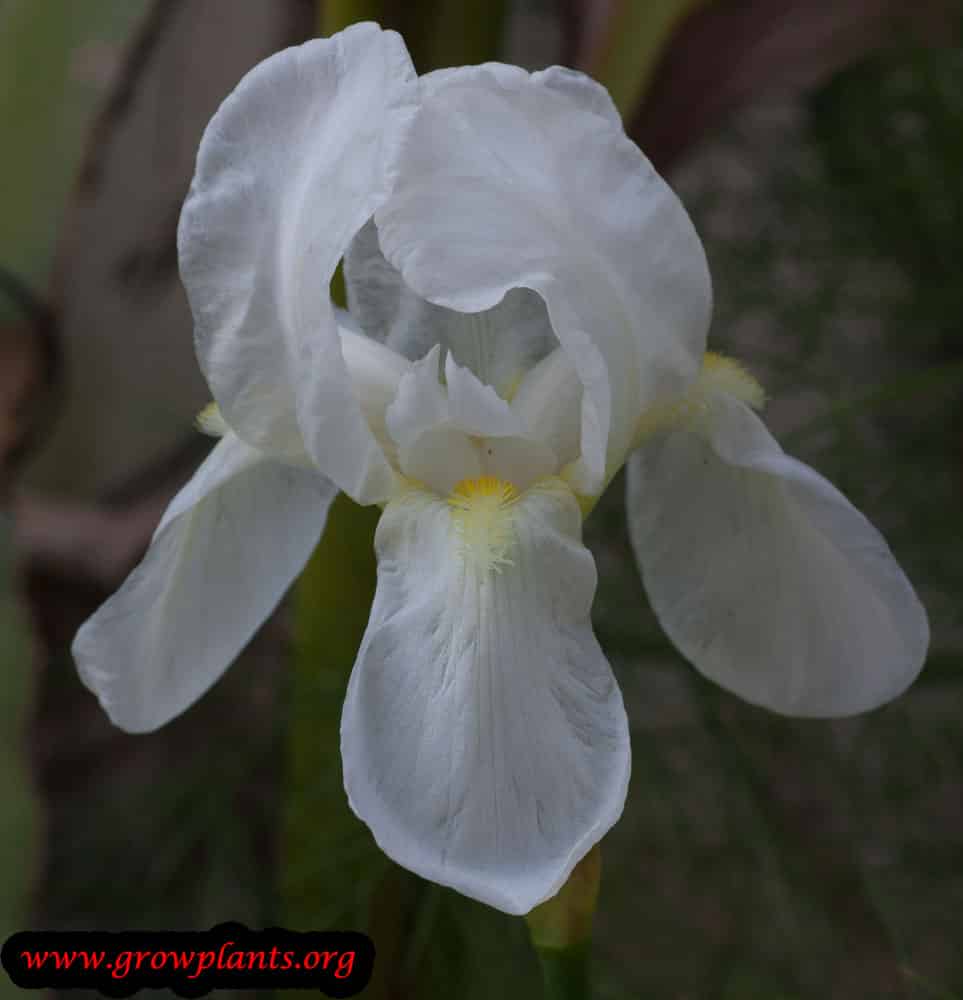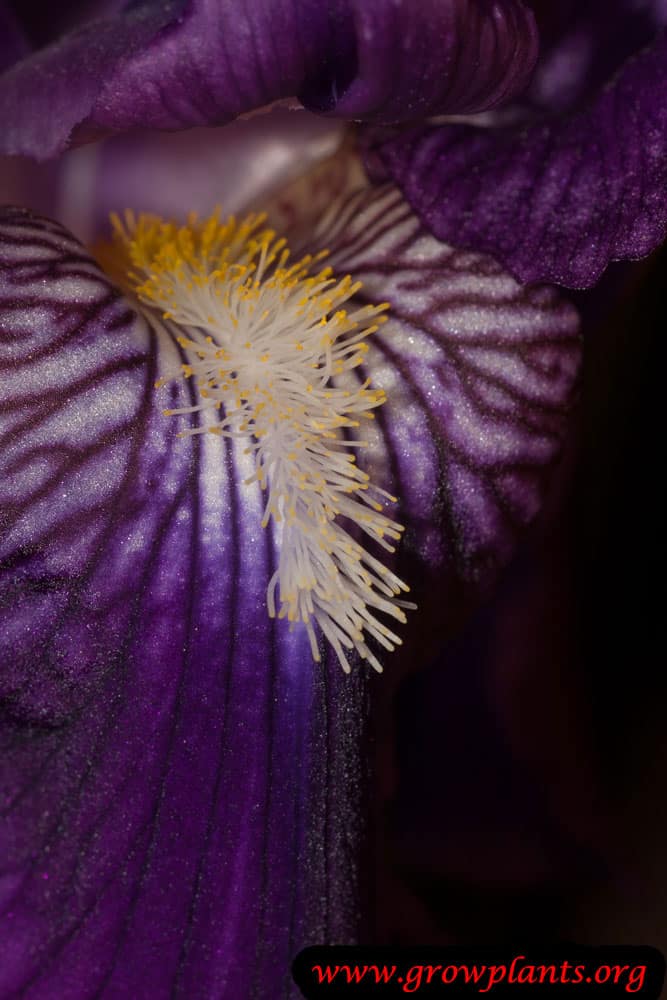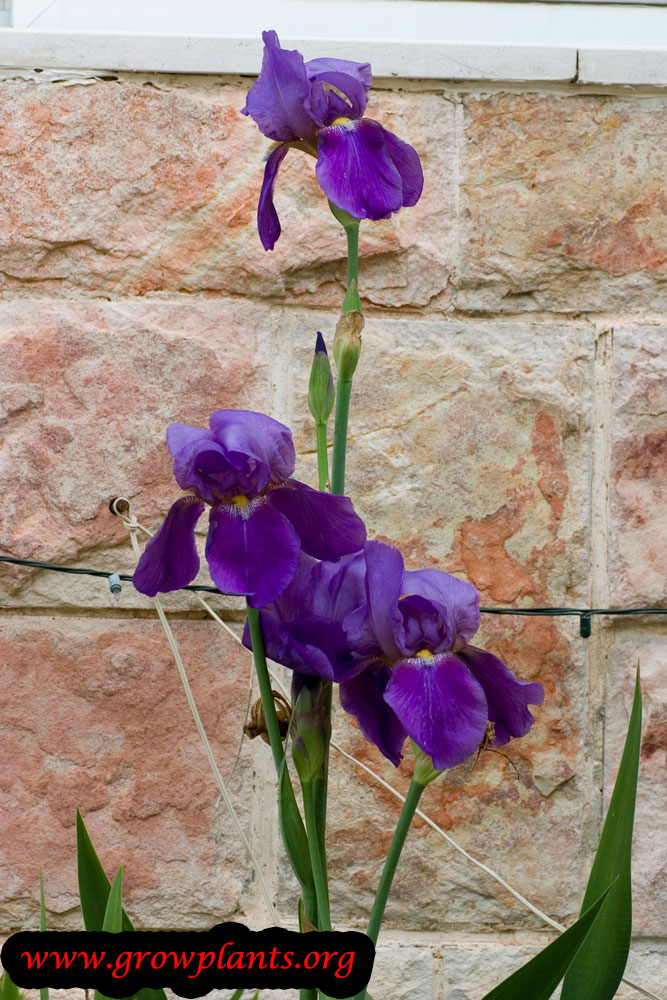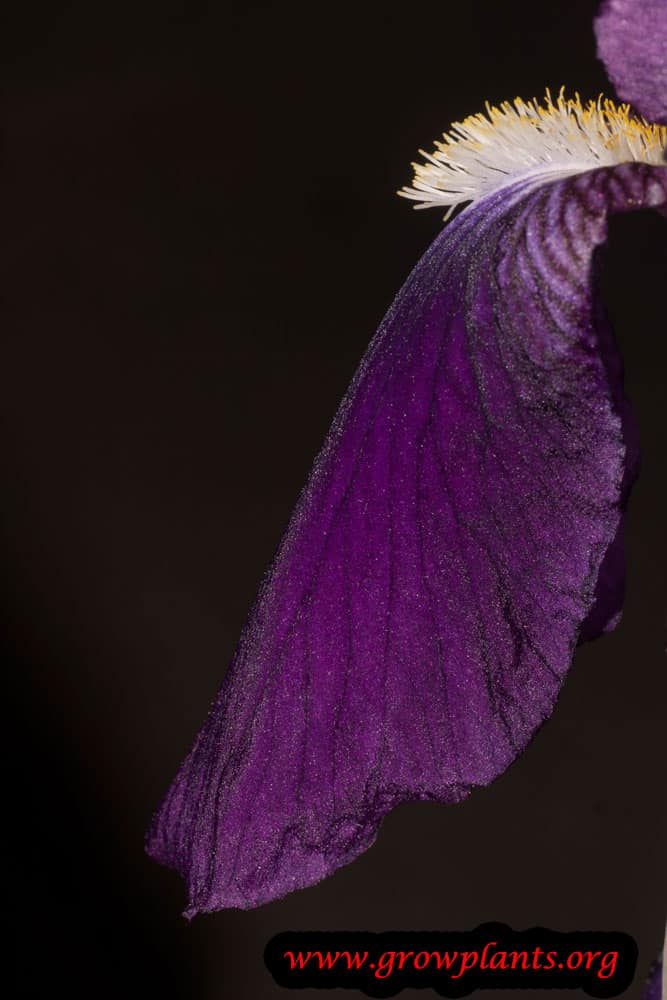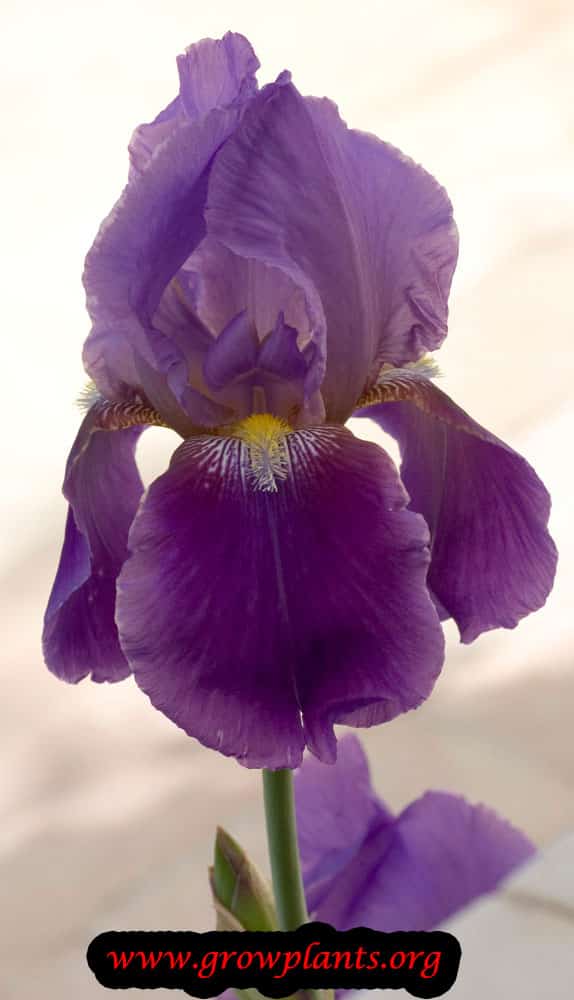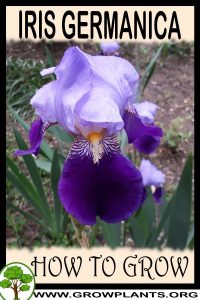
Iris germanica growing geophyte of the genus iris also known as German Iris, Iris germanica perennial evergreen plant used as ornamental plant for the flowers, can grow in mediterranean, subtropics or temperate climate and growing in hardiness zone 3-10. And with the right care possible to grow in hardiness zone 11a.
Leaves grow in a sword-shaped, top of the leaves biased toward mostly bend to down, leaves grow in groups linked together.
Iris germanica flowers
Flower makes shape hollow area, flower color can be: purple, black, blue, pink, blue, white, red, maroon, yellow, orange or can be more than one color on the flower.
Iris germanica for sale – Seeds or Plants to Buy
How to grow Iris germanica – growing and care:
Covered soil – mulch, in the winter or when the plant is young
What is the best way to start growing?
Plant / Bulb / Vegetative Reproduction
Is it necessary to graft or use vegetative reproduction?
Yes, vegetative reproduction
Difficulties or problems when growing:
Aggressive, start to grow in one spot and send new growth without control
Planting season:
Spring in hardiness zone 3-8, spring to summer in hardiness zone 8-9, spring to autumn 10a, autumn to spring in desert hardiness zone 10b-11a and all the year in hardiness zone 10b-11a in subtropical but better not in the hot summer days.
How to plant:
Dig a hole as deep as the current root ball plus extra 20-40%, put in the hole organic matter, hummus and dried leaves and mix it with some soil, put the plant and loos little bit the root ball above the hole, plant and cover it and don’t push the soil too much strong but not too much lightly because it won’t be stable, after this put mulch to keep moist on soil, put water, for the next two weeks put every day (better in the morning) , better to take care that the plant will be stable.
Transplanting instruction:
Transplanting in the winter when the plant mostly go to dormant the moist important part it’s the corm, better to cut part of the roots and the leaves.
Pests and diseases:
Slug, leaf miner, spider mites
Pruning season:
All year, for reducing that amount of plant better to cut in the winter and better to pull the plant with the roots
How to prune:
Dead leaves and dead bloom stems, better not to cut leaves and bloom stems until dry because it has effect on the blooming
Size of the plant:
20-120 cm the leaves 20-50 the flowers until 120cm
Growth speed in optimal condition:
Fast growing
Water requirement:
Average amount of water / Big amount of water / can grow also in small amount of water, possible to let it without water for a long period, but the plant prefer regular water especially in the blooming season but with good drainage
Light conditions in optimal condition for growing:
Full sun/ Half Shade (can grow in less than full sun but then it will have less flowers)
Is it possible to grow indoor as houseplant?
No
Growing is also possible in a pot / planter /flowerpot / containers:
Yes, but in order to get flowers after few years need to check that the roots system not fill all the planter, if it’s full need to reduce that amount of plants or to increase the size of the container, except this need to pull old plants after having flowers, pruning the leaves and roots and reduce the amount of roots in the pots and let new roots to grow, every few need to check the soil that it’s still viable and if not take care of the soil by washing the old soil and put new, soil better to have potting mix or something similar.
Blooming information
Bloom season?
Winter, spring
General information about the flower:
Flower color can be: purple, black, blue, pink, blue, white, red, maroon, yellow, can be more than one color on the flower
How to grow Iris germanica from seeds
Sowing requirement:
Sunny location with good drainage
Saving seeds and care until sowing:
Dry and dark place, better to keep in in the refrigerate before need enough cold hours at least 6C.
Sowing season:
Spring in hardiness zone 3-8, spring to summer 9-10a, late winter to spring or autumn in hardiness zone 10b-11
How to plant:
Better to plant in vermiculite and keep it moist
Planting spacing:
20*30cm (8*12 inches)
Depth of Sowing:
0.5-1cm (0.25-0.5inches)
Conditions for seeds germinate:
Moist soil with light humidity
Watering requires for Seeds:
Average amount of water, keep soil moist but not over water and don’t let it dry
Germination time:
2-8 weeks
Condition of seedling:
Full sun, regularly water, keep the soil moist
Do the seeds require burying?
Yes, conditions to bury can be direct in the soil but in hotter area better to put in the coldest location of the refrigerator
Chilling hour’s requirements:
At least one month
Scientific name:
Iris germanica
Categories
| Blooming Seasons |
|
|---|---|
| Flower colors |
|
| Climate |
|
| Ornamental parts |
|
| Plant growing speed |
|
| Plant life-form |
|
| Plant Uses |
|
| Planting Season |
|
| Plants sun exposure |
|
| Watering plants |
|
| Hardiness zone |
|



